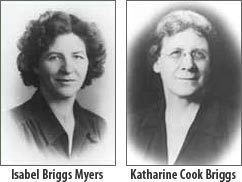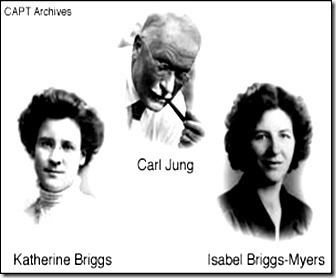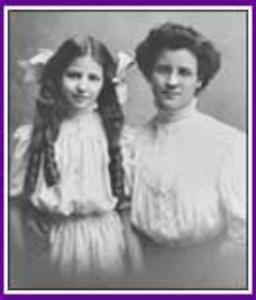Nationality American Died May 5, 1980 Role Author | Name Isabel Myers Spouse Clarence Myers (m. 1918) | |
 | ||
Born 18 October 1897 ( 1897-10-18 ) Known for Myers-Briggs Type Indicator Children Peter Briggs Myers and Ann Myers Hughes Parents Lyman James Briggs, Katharine Cook Briggs Grandparents Albert John Cook, Mary H. Cook Books Gifts Differing: Understa, Introduction to type, Murder Yet to Come, Manual - a Guide to the Devel, MBTI Manual: A Guide to t Similar People Katharine Cook Briggs, Carl Jung, Lyman James Briggs | ||
Isabel Briggs Myers (October 18, 1897 – May 5, 1980) was an American author and co-creator of a personality inventory known as the Myers–Briggs Type Indicator (MBTI). Briggs Myers created the MBTI with her mother, Katharine Cook Briggs.
Contents
- MBTI personality indicator
- Influences
- Fiction
- Application
- CAPT
- Memorial research awards
- Publications
- References

MBTI personality indicator

Briggs Myers implemented the ideas of Carl Jung and added her own insights. She then created a paper survey which would eventually become the MBTI. The test was to assess personality type and was fully developed after 20 years of research by Briggs Myers with her mother and thousands of others. In the 21st century, research into this instrument is still being put into action with dozens of articles written per year. The questionnaire is meant to help people realize their "best fit type", the personality type that will help them succeed most in life. The three original pairs of preferences in Jung's typology are Extraversion and Introversion, Sensing and Intuition, and Thinking and Feeling. After studying them, Briggs Myers added a fourth pair, Judging and Perceiving.

Influences

In the July 1980 edition of MBTI News, Briggs Myers attributed another reason for creating the MBTI to her marriage to "Chief" Clarence Myers. Their differences in psychological type (she was an INFP and he was an ISTJ) inspired her mother, Katharine Cook Briggs, to keep studying differences among people and their actions. Cook Briggs came upon the work of Carl Gustav Jung and introduced it to her daughter who then started studying the psychological types.

When World War II began, Briggs Myers wanted to help reduce conflict among people. People were dying, hurting and harming each other, and she wanted to help them understand each other instead of hurting them. She observed that some people also hated their jobs in the military and she wanted to know what was behind that.

In 1945, the dean of the George Washington School of Medicine allowed Briggs Myers and Cook Briggs to apply the MBTI to first-year undergraduates. This included about 5,500 students and Briggs Myers studied it for years by looking at patterns among dropouts and successful students.
Fiction
The novel Murder Yet to Come, published in 1929, won the National Detective Murder Mystery Contest for that year. It applies her ideas about personality type into a murder mystery.
Briggs Myers' second work of fiction, Give Me Death, published in 1934, revisits the same detectives from Murder Yet to Come but also describes personality type as racially determined. In it, a Southern family commits suicide one by one after learning they may have "Negro blood".
Application
In 1962, the Educational Testing Service published the MBTI for research-only purposes. In 1975, 1977 and 1979, three national MBTI conferences were held at the University of Florida, Michigan State University, and Philadelphia respectively. In 1975, Consulting Psychologists Press, Inc. published the MBTI as a tool for helping people.
In the 2000s, the MBTI is now taken by more than two million people per year and is translated into 16 languages.
CAPT
In 1975, Briggs Myers co-founded the Center for Application of Psychological Type with Mary McCaulley. CAPT is a non-profit organization which maintains research and application of the MBTI. It also exists to protect and promote Briggs Myers' ideology. Its headquarters are in Gainesville, Florida and its motto is “Fostering human understanding through training, publishing, and research”.
Memorial research awards
The Isabel Briggs Myers Memorial Research Awards exist to further MBTI and psychological research. These awards are given twice a year. They consist of $2,000 for up to two people. They are rewarded for advancements in understanding of these topics to focus on continuous research in the field.
Publications
Gifts Differing is written by Isabel with her son, Peter Briggs Myers. It is about human personality and how it affects several aspects of life such as career, marriage, and meaning of life. It speaks about all sixteen personality types.
